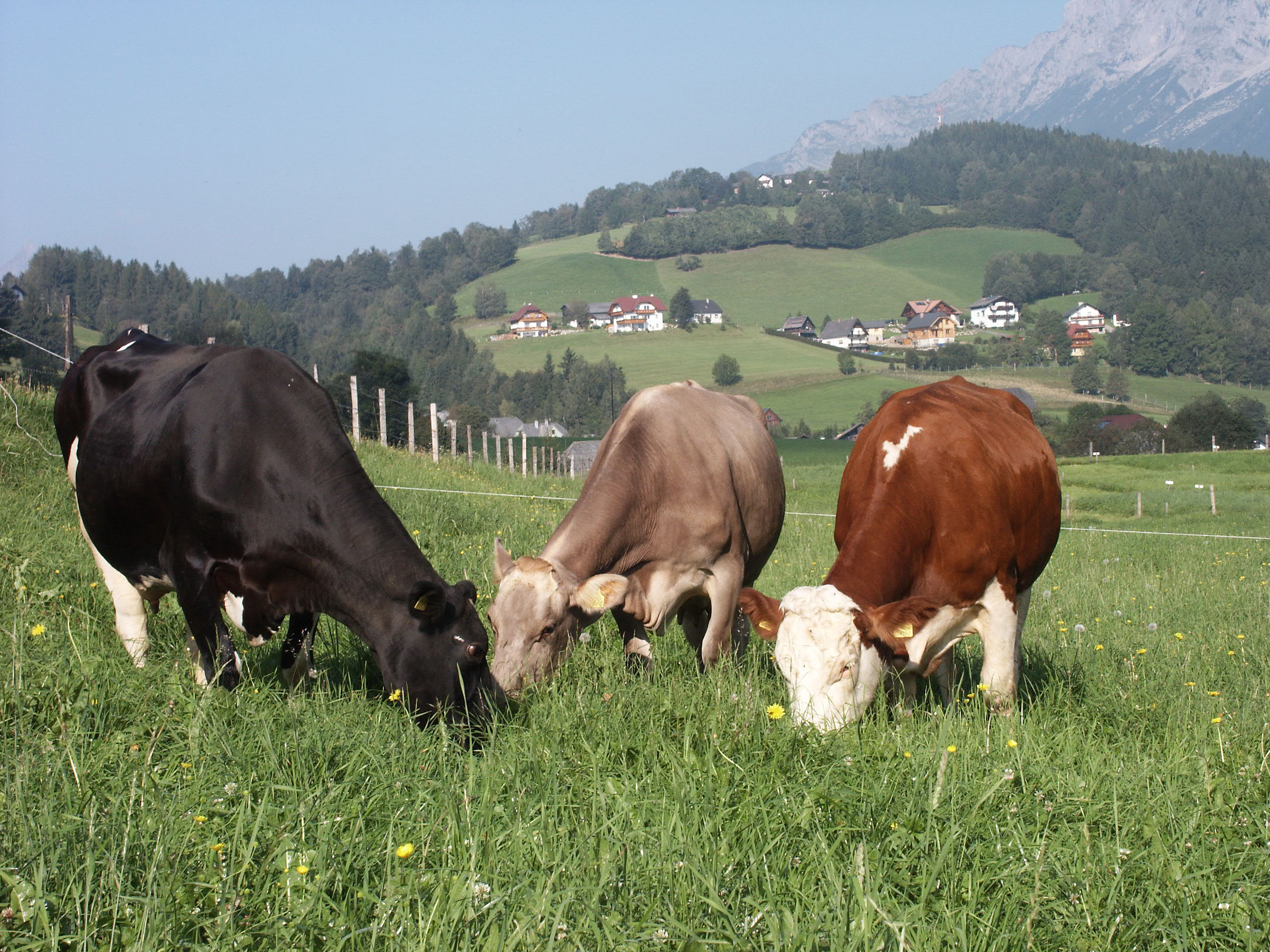
Goals and tasks
Goals and tasks
Livestock research
In addition to the necessary feeding and exercise areas, the Institute for Livestock Research has access to various stables for cattle, sheep and goats as research resources.
The animal population consists of around 180 cattle (including almost 70 dairy cows of the Holstein Friesian, Fleckvieh and Brown Swiss breeds) and around 200 sheep and goats.
Exact and husbandry experiments are carried out in the research fields of animal nutrition, alternative cattle farming, herd management and sheep and goat farming.
Areas of responsibility of the Institute for Livestock Research
- Systematic research on questions of production technology in the livestock industry
- Scientific treatment of all questions regarding animal nutrition and nutritional physiology
- Research into production alternatives to secure agricultural operations and preserve the cultural landscape
- Effects of livestock farming on the nutrient balance and the climate impact of agricultural operations
- Development of key production data as a basis for economic and environmentally relevant calculations of the beef, sheep and goat production chain (production efficiency taking into account rearing of young animals, milk production and meat production)
- Factors influencing the quality of farm animal products
- Data collection and data processing
General research objectives of the institute:
- Animal nutrition and physiology
(nutrient requirements, feed evaluation in vivo / in situ / in vitro, lactation and mobilization, feed intake, nutrition and animal health) - Alternative production systems with cattle and small ruminants to maintain farms and the cultural landscape
(grassland for quality meat production, suckler cow farming, fattening systems, extensive sheep farming, dairy sheep farming, influence of grazing on botanical biodiversity) - Influence of animal production on the nutrient balance of agricultural operations
(environmental influence, balance tests with cattle and sheep) - Development of production data as a basis for economic model calculations and decisions
- Influence of nutrition on the quality of products
(fatty acids in milk and meat, meat from alternative production systems and production niches)

Eckhart Alexandra
Telephone: +43 3682 22451-263alexandra.eckhart@raumberg-gumpenstein.at

Griesebner Andrea
Telephone: +43 3682 22451-271andrea.griesebner@raumberg-gumpenstein.at

Guggenberger Thomas, Dr.
Telephone: +43 3682 22451-260thomas.guggenberger@raumberg-gumpenstein.at

Mayer Lauren
Telephone: +43 3682 22451-262lauren.mayer@raumberg-gumpenstein.at

Royer Martin
Telephone: +43 3682 22451-261martin.royer@raumberg-gumpenstein.at





